| View previous topic :: View next topic |
| Author |
Message |
Volkmar Stingl
Joined: 23 Sep 2012
Posts: 842
Location: Innsbruck



|
 Posted: Dec 10, 2020 09:41 Post subject: Re: Who can help me Posted: Dec 10, 2020 09:41 Post subject: Re: Who can help me |
|
|
| Does it fizz with hydrochloric acid? If yes, then calcite.
|
|
| Back to top |
|
 |
James Tate
Joined: 13 Nov 2020
Posts: 7
Location: Greer, SC


|
 Posted: Dec 11, 2020 11:16 Post subject: Re: Who can help me Posted: Dec 11, 2020 11:16 Post subject: Re: Who can help me |
|
|
Al,
Your new discoveries are very interesting, and once again share some similarities to samples recovered from the W.I.S. impact-related ejecta deposits. Man, I wish I could go exploring with you...it's not fair. That's where all the fun is.
I saw your samples yesterday but was stuck writing and sending emails with the academics, in regards to high-pressure phase diagrams of Iron-Oxides, such as Fe4O5.
No fun at all.
I believe one of your first inclinations are correct. These are likely marine organic fossil deposits of some type. And, likely involved within the suspected impact-event that took place near the location.
The upper levels of the W.I.S. Ejecta Deposits exhibit similar material that I could not initially explain. The material samples appeared to be a type of heat-related melt glass with pockets of sparkling crystals.
Knowing that larger impact events can produce a highly-ionized cloud of vapor and melt products, I assumed these specific samples might possibly be the result of that process. Very similar to a "fulgurite" caused by a lightning strike.
However, more study and investigation showed that W.I.S. marine fossils connected with the event-deposits shared a similar composition feature. Thus, likely explaining that these specific material samples must have been organic-material in nature at the time of impact and deposition.
*Always remember to grab some material samples for future reference and study. Especially the gray rock matrix that houses these interesting crystallized samples. You never know what micro-particles and fossil evidence may be hiding from the naked eye.
As always, I'll let you compare some of the W.I.S. material samples, and hope that it might help your investigation and research.
*I'm also curious regarding any Iron (Fe) related samples that you may find in the area. I've been studying some ancient Egyptian (Fe) beads found in a 5,000-year-old tomb, with academics being confident these (Gerzeh Beads) were created by a meteor impact event. This also suggests they could be connected with the mysterious Libyan Desert Glass that exhibit (Fe) particles in many samples.
Strange (Fe) material is also being located around the Farafra Oasis area of Egypt. These (Fe) samples were first classified as hematite but recently changed to marcasite. They have a strange snowflake-like crystallized appearance and could very possibly have been formed from the pressures and heat of an impact-event-process. An origin that a regular geologist would rarely or never consider.
Again...I wish I could be out there exploring this material with you. Let's get more into these "burning rocks" that you mention, and discuss more examples of impact melt glass characteristics, such as high-levels of pure silicon dioxide (Sio2), referred to as Lechatelierite.
Your Friend,
James Tate
| Mineral: | Upper Level Melt-Fossil Products |
| Description: |
Locality: U.S. Western Interior Seaway
Impact-related material found within a sandstone-like deposit of catastrophic deposition. The composition appears as a type of pitted-fused-glass with pockets of sparking crystals. Note: Pockets of the original non-melted rock matrix exhibit a transitional melt-phase with outer edges fusing with the object sample. |
|
| Viewed: |
9060 Time(s) |
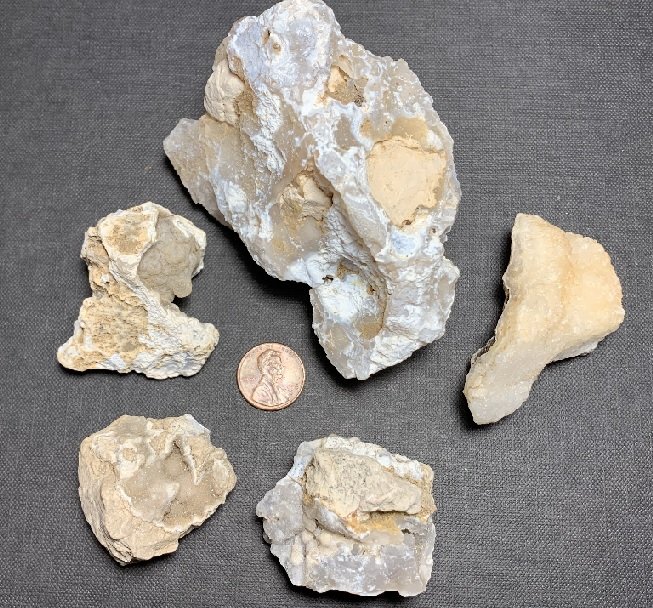
|
| Mineral: | WIS Horned Coral Fossil Samples |
| Description: |
Locality: U.S. Western Interior Seaway
Horned Coral Fossil samples recovered from the upper-levels of the WIS Ejecta Deposits. These fossil samples exhibit the same composition features as the material (pictured above). This would suggest that all material exhibiting this specific pitted-melt-fused structure was once a type of organic living organism during the time of the impact event. Note: Horned Coral Fossils were a common marine organism located within the ancient U.S. Western Interior Seaway, and went extinct during the KT Extinction Event (66mya). |
|
| Viewed: |
9106 Time(s) |
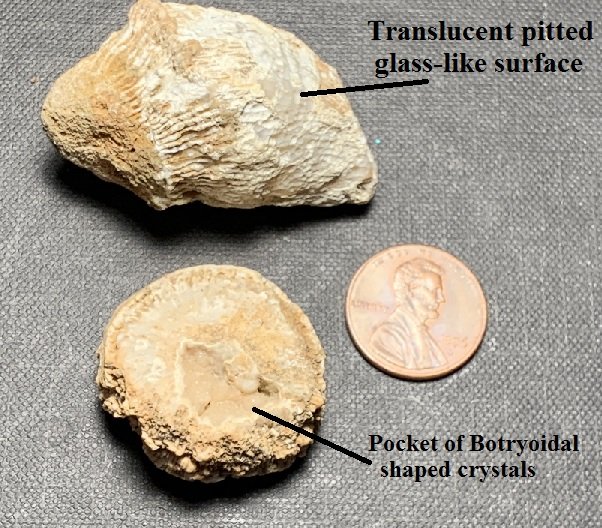
|
| Mineral: | WIS Material Sample |
| Description: |
Locality: U.S. Western Interior Seaway
Displays a closer view of WIS sample (pictured above) showing glass-like crystal growth. This sample is very similar to the possible marine-organic-materials you recently located in the western-desert area. The crystal growth obviously and likely occurred after the impact process, but still displays strange features of possible toasted-melt and deformation. These material samples have always presented problems with absolutes and solid explanations. |
|
| Viewed: |
9055 Time(s) |
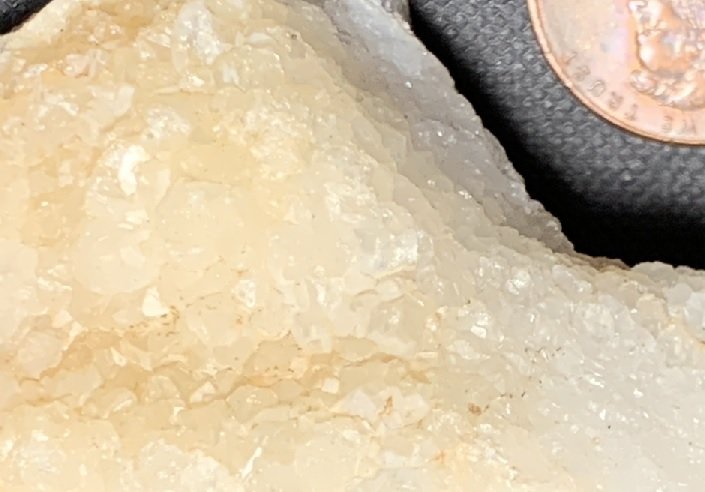
|
| Mineral: | Upper-Level WIS Material |
| Description: |
Locality: U.S. Western Interior Seaway
Displays a 60x view of clear glass-like crystals. These crystals exhibit obvious planar fractures, and what I believe to be "deformation twinning." Note: Existing crystals that are "shocked" by high-pressures during an impact event would be considered as "planar deformation features," or PDF's. However, the sample shown here would be considered as :deformation twinning," A crystal product formed "after" the extreme high-pressure-temperature energy event. |
|
| Viewed: |
9055 Time(s) |
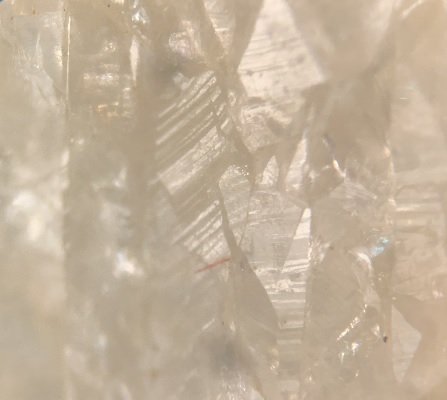
|
| Mineral: | Upper Level WIS Deformation Twins |
| Description: |
Locality: U.S. Western Interior Seaway
Another 60x view of suspected Deformation Twins. Note: The actual mineral composition of this material has not yet been identified, but shows a hardness factor around 7 on the scale. |
|
| Viewed: |
9052 Time(s) |
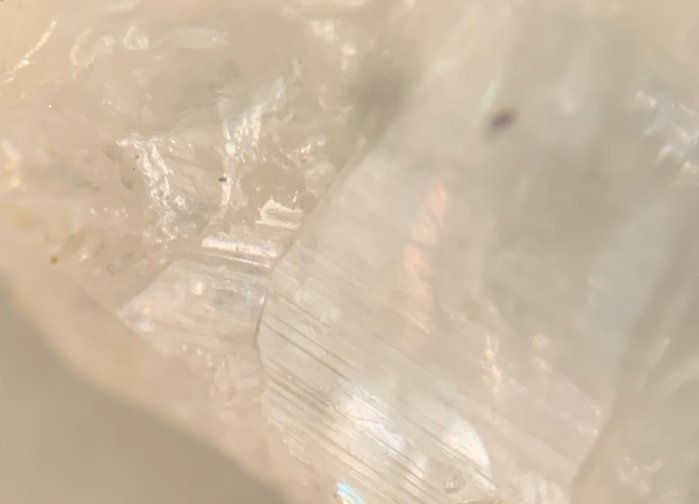
|
|
|
| Back to top |
|
 |
ALshawani
Joined: 08 Feb 2020
Posts: 38
Location: Africa


|
 Posted: Dec 11, 2020 15:50 Post subject: Re: Who can help me Posted: Dec 11, 2020 15:50 Post subject: Re: Who can help me |
|
|
| James Tate wrote: | Al,
Your new discoveries are very interesting, and once again share some similarities to samples recovered from the W.I.S. impact-related ejecta deposits. Man, I wish I could go exploring with you...it's not fair. That's where all the fun is.
I saw your samples yesterday but was stuck writing and sending emails with the academics, in regards to high-pressure phase diagrams of Iron-Oxides, such as Fe4O5.
No fun at all.
I believe one of your first inclinations are correct. These are likely marine organic fossil deposits of some type. And, likely involved within the suspected impact-event that took place near the location.
The upper levels of the W.I.S. Ejecta Deposits exhibit similar material that I could not initially explain. The material samples appeared to be a type of heat-related melt glass with pockets of sparkling crystals.
Knowing that larger impact events can produce a highly-ionized cloud of vapor and melt products, I assumed these specific samples might possibly be the result of that process. Very similar to a "fulgurite" caused by a lightning strike.
However, more study and investigation showed that W.I.S. marine fossils connected with the event-deposits shared a similar composition feature. Thus, likely explaining that these specific material samples must have been organic-material in nature at the time of impact and deposition.
*Always remember to grab some material samples for future reference and study. Especially the gray rock matrix that houses these interesting crystallized samples. You never know what micro-particles and fossil evidence may be hiding from the naked eye.
As always, I'll let you compare some of the W.I.S. material samples, and hope that it might help your investigation and research.
*I'm also curious regarding any Iron (Fe) related samples that you may find in the area. I've been studying some ancient Egyptian (Fe) beads found in a 5,000-year-old tomb, with academics being confident these (Gerzeh Beads) were created by a meteor impact event. This also suggests they could be connected with the mysterious Libyan Desert Glass that exhibit (Fe) particles in many samples.
Strange (Fe) material is also being located around the Farafra Oasis area of Egypt. These (Fe) samples were first classified as hematite but recently changed to marcasite. They have a strange snowflake-like crystallized appearance and could very possibly have been formed from the pressures and heat of an impact-event-process. An origin that a regular geologist would rarely or never consider.
Again...I wish I could be out there exploring this material with you. Let's get more into these "burning rocks" that you mention, and discuss more examples of impact melt glass characteristics, such as high-levels of pure silicon dioxide (Sio2), referred to as Lechatelierite.
Your Friend,
James Tate |
Okay Professor James
I'll show you some pictures that are close to the pictures I thought
| Description: |
|
| Viewed: |
9016 Time(s) |
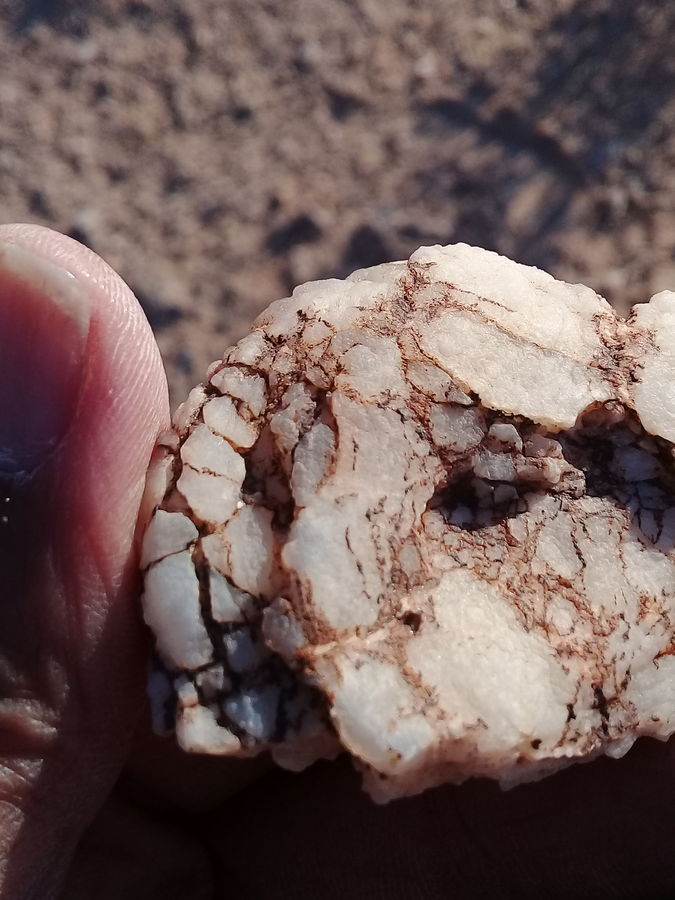
|
| Description: |
|
| Viewed: |
9019 Time(s) |
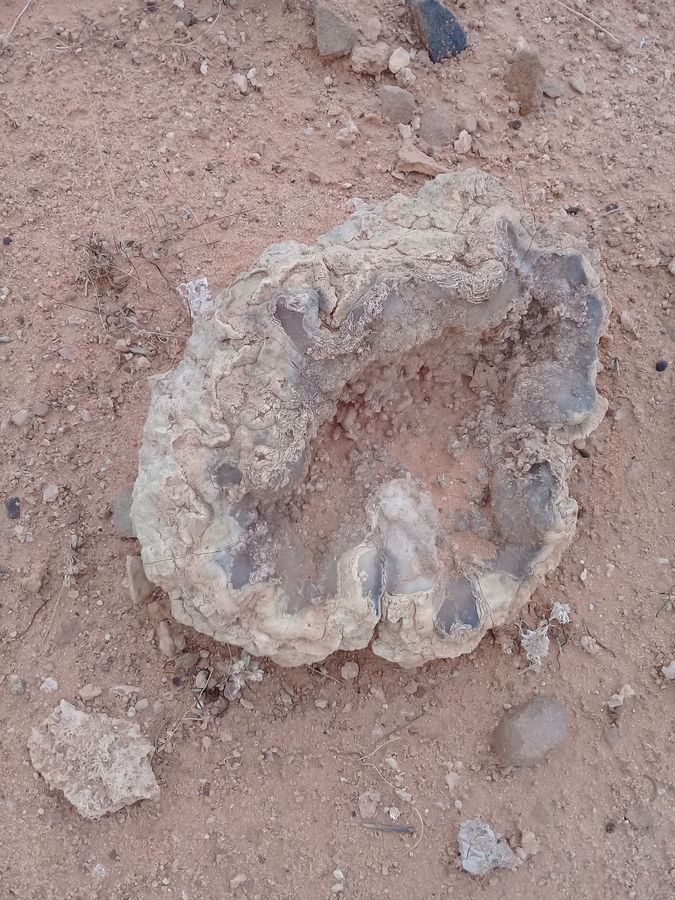
|
| Description: |
|
| Viewed: |
9021 Time(s) |
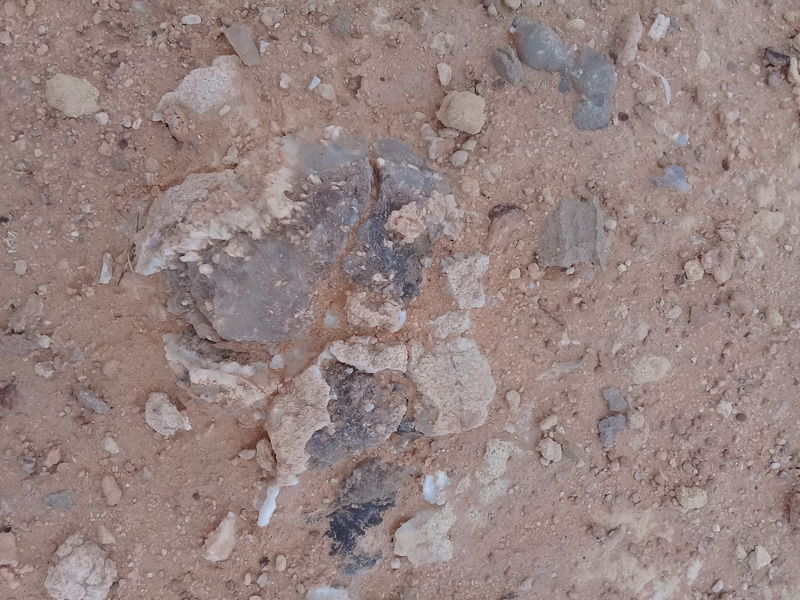
|
| Description: |
|
| Viewed: |
9046 Time(s) |
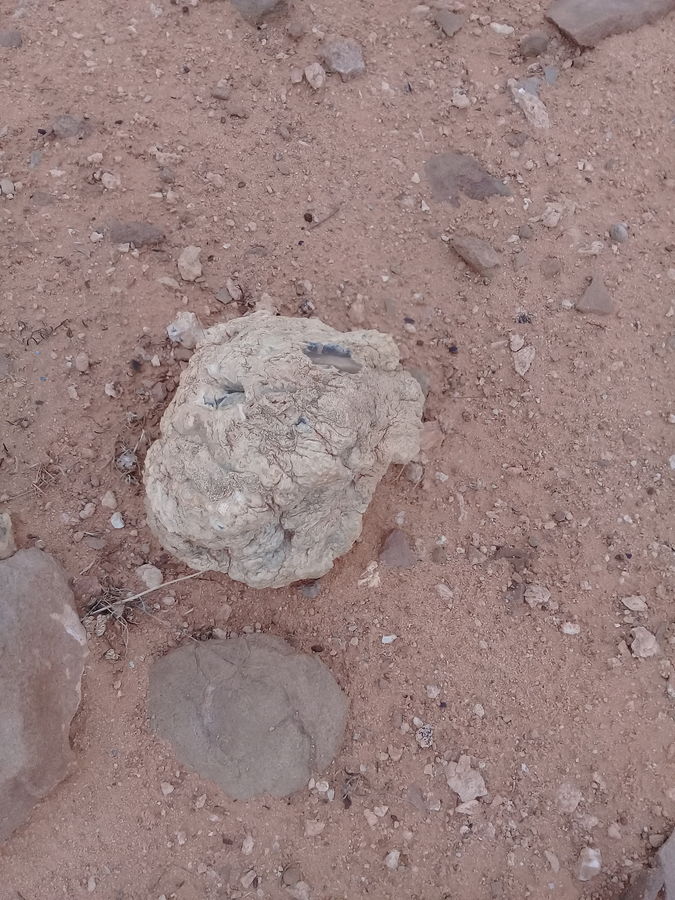
|
|
|
| Back to top |
|
 |
Volkmar Stingl
Joined: 23 Sep 2012
Posts: 842
Location: Innsbruck



|
 Posted: Dec 12, 2020 01:14 Post subject: Re: Who can help me Posted: Dec 12, 2020 01:14 Post subject: Re: Who can help me |
|
|
| Sorry, but I cannot see ANY impact-related feature up to now in your Libyan rocks. I see only chert (flint) concretions with some quartz crystals in hollows, and on the other hand calcite ...
|
|
| Back to top |
|
 |
Vinoterapia
Joined: 03 Feb 2009
Posts: 179
Location: Houston, Tx



|
 Posted: Dec 12, 2020 11:10 Post subject: Re: Who can help me Posted: Dec 12, 2020 11:10 Post subject: Re: Who can help me |
|
|
As I mentioned earlier in the post, and concurring with Mr. Stingl opinion, I believe that your samples are mostly chert concretions and some calcite crystals.
Making identifications by photographs are always tricky. I will suggest that you take some of your samples to a Geology school in your region. I am sure that you will find somebody to help you out with a proper identification.
To Mr.Tate:
I do not want to be impolite, but I am somewhat skeptic of your depiction of the "W.I.S." meteorite. I have been unable to find any information of such an event by searching the Internet, so my questions are:
Is this impact event recognized by some other name, when and where it occurred?
Is there a peer reviewed paper where we can find descriptions and analysis of the samples that you mention?
|
|
| Back to top |
|
 |
James Tate
Joined: 13 Nov 2020
Posts: 7
Location: Greer, SC


|
 Posted: Dec 12, 2020 14:11 Post subject: Re: Who can help me Posted: Dec 12, 2020 14:11 Post subject: Re: Who can help me |
|
|
To Mr. Stingl and Vinoterapia,
Let me first say, that I completely understand your skepticism and personal perspectives involved within the scope of issues you are currently reading about. No need to “apologize,” or seem “impolite.”
I warned Al about the “academic community” and folks like yourself a few posts ago. Meaning, that to establish “sufficient proof” of asteroid impact-related materials is quite difficult and very unlikely for professionals and enthusiasts, as the both of you to accept. That is the nature of scientific recognition/acceptance and we can all trace that concept back to hundreds of years and thousands of debates within the different fields of scientific exploration.
That is likely the “one” thing we can all agree upon. Well, I am also guessing that both of you do not believe in a flat-earth theory? So, that makes two things at least.
Mr. Stingl offered his opinions/observations pertaining to the Libyan-Desert “suspected” impact-related evidence on hand and declared he was not convinced. Of which, I again warned Al that this would most likely be the case until more specific diagnostic-evidence-features of impact were recovered, properly studied, and interpreted correctly. As for proper scientific investigative principles and the concept of proving “extraordinary” discoveries, no clear and evident fault can be brought upon Mr. Stingl. He made no mention and offered not one observational-opinion based on the material evidence characteristics of the W.I.S. impact-related discovery I conveyed during my posts. This marks the specific individual as a hard-core “show me the evidence” scientific enthusiast. And you are to be commended for such rationalization. Meaning, the world in which you observe, is most likely the way it truly is.
Now, let us get into the conceptual understanding of what Mr. Vinoterapia had to say.
This individual also agrees the evidence of impact-related materials in the Libyan-Desert area are lacking sufficient proof and remains sincerely unconvinced. Again, I have already stated that more evidence is needed to fully establish that principle. However, I feel these two individuals do not quite grasp the “concept” of theory and exploration.
Meaning, the communication between Al and myself is embarking on the “attempt” and “possibility” to find impact-related materials to eventually “establish” something rare and truly valuable/important. This exchange is not meant to “prove” anything at the current moment. This exchange of information is meant to “explore” theories, possibilities, and both learn new information/data from the process.
Can everyone understand that?
It requires a myriad of data exchange and research to present and offer what both you, and many others demand. We are currently in the “process” of that exchange pertaining to the Libyan-Desert material. Maybe it is something. Maybe it is nothing. That is really the true question at hand, regarding Al’s Libyan-Area material.
Now, regarding what you had to say about the W.I.S. impact-related material.
You exclaimed that you are “skeptical,” which is fine. But why?
Because you searched the internet and found nothing supporting the impact-related nature of the discovery?
Because no “accredited” academic peer review process has been performed?
This is true. There is nothing. You will not find one single thing about it.
The W.I.S. impact-related discovery site is my own personal/private scientific research project.
Did the multiple-evidence-features and data I conveyed regarding the W.I.S. impact-related site not convince or sway your judgment about it?
These are profoundly important questions.
Meaning, I am curious what it would require to fully convince you (and many others I’m sure) of an impact-related discovery.
And please know...I do not wish to be “impolite.” However...
Are you capable of observing the specific diagnostic evidence features of impact-related materials and crater-morphology/locations, based on your own knowledge and conclusions?
Or...
Does it require a Ph.D. and peer review process by a collective audience to suggest and inform you of such?
These are legitimate questions, and I would be very curious regarding your answer.
Sincerely,
James Tate
|
|
| Back to top |
|
 |
Jordi Fabre
Overall coordinator of the Forum

Joined: 07 Aug 2006
Posts: 4896
Location: Barcelona



|
|
| Back to top |
|
 |
|



